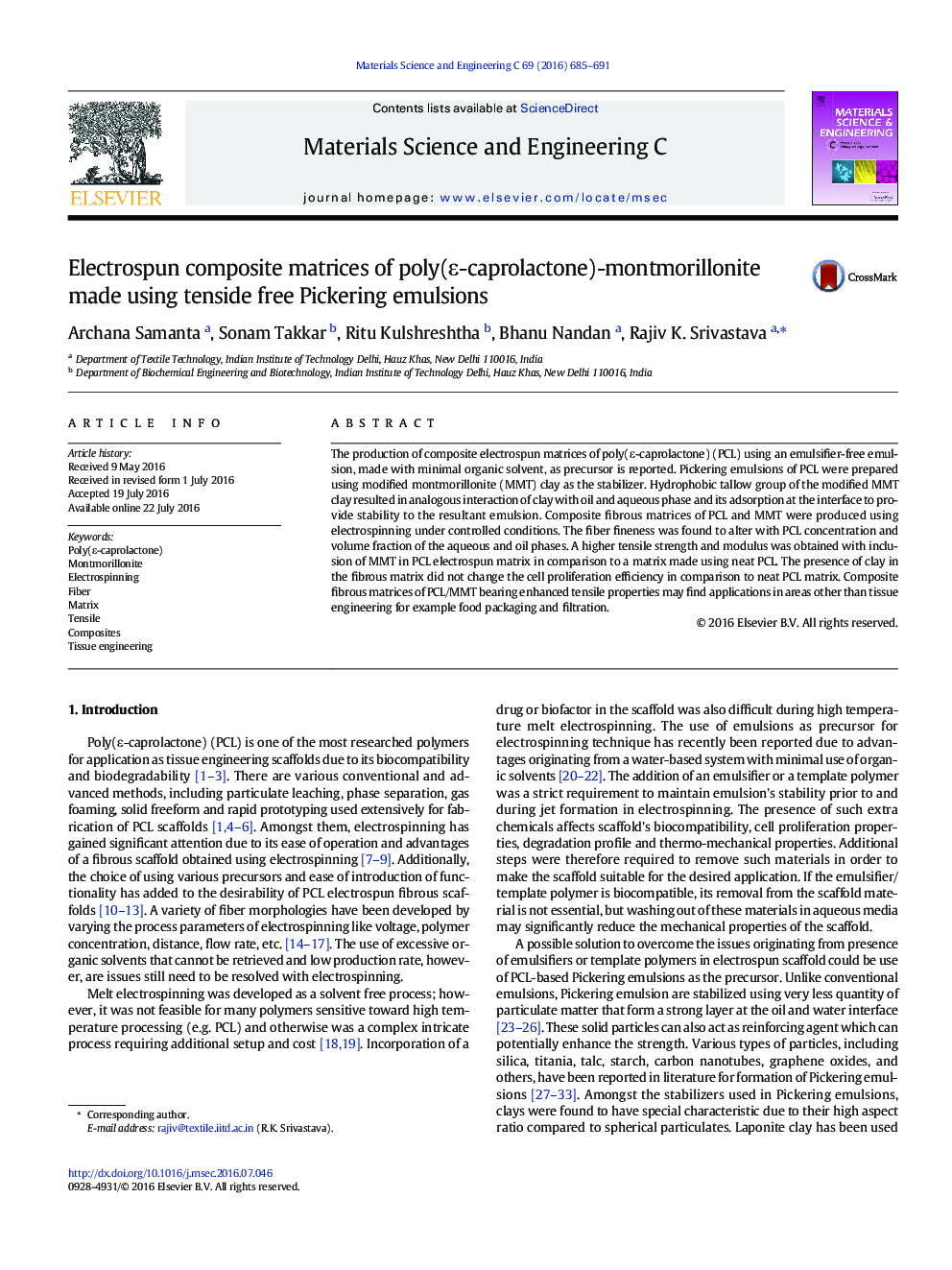| Article ID | Journal | Published Year | Pages | File Type |
|---|---|---|---|---|
| 1427902 | Materials Science and Engineering: C | 2016 | 7 Pages |
•Tenside free, clay stabilized Pickering emulsion of PCL is made with minimal organic solvent.•Organic–inorganic composite fibrous matrices were produced via emulsion electrospinning.•Fiber fineness was efficiently controlled by variation in emulsion formulation.•Fibrous matrices of high tensile strength and modulus were obtained in comparison to neat PCL matrix.•PCL/clay matrices showed effective cell proliferation as a neat PCL matrix.
The production of composite electrospun matrices of poly(ε-caprolactone) (PCL) using an emulsifier-free emulsion, made with minimal organic solvent, as precursor is reported. Pickering emulsions of PCL were prepared using modified montmorillonite (MMT) clay as the stabilizer. Hydrophobic tallow group of the modified MMT clay resulted in analogous interaction of clay with oil and aqueous phase and its adsorption at the interface to provide stability to the resultant emulsion. Composite fibrous matrices of PCL and MMT were produced using electrospinning under controlled conditions. The fiber fineness was found to alter with PCL concentration and volume fraction of the aqueous and oil phases. A higher tensile strength and modulus was obtained with inclusion of MMT in PCL electrospun matrix in comparison to a matrix made using neat PCL. The presence of clay in the fibrous matrix did not change the cell proliferation efficiency in comparison to neat PCL matrix. Composite fibrous matrices of PCL/MMT bearing enhanced tensile properties may find applications in areas other than tissue engineering for example food packaging and filtration.
Graphical abstractFigure optionsDownload full-size imageDownload as PowerPoint slide
